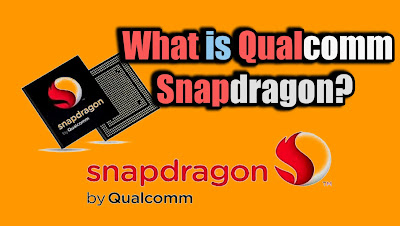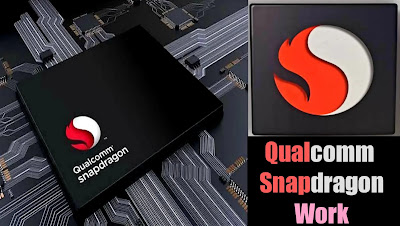The Qualcomm Snapdragon is a mobile platform that is used in smartphones and tablets. It's found inside of the majority of Android phones. The "Snapdragon" name comes from two words — "snap" and "dragon". Snap refers to how fast you can take a photo with this processor. Dragon refers to its ability to recognize speech and other patterns quickly. Here's some more information about this powerful mobile processor..
1. What is Qualcomm Snapdragon?
According to Wikipedia, Qualcomm Snapdragon is a series of ARM-based system on a chip (SoC) semiconductor products designed and marketed by Qualcomm for mobile devices. It is also the brand name of the company's line of system on a chip (SoC) semiconductor products.
2. How does the Qualcomm Snapdragon work?
Qualcomm Snapdragon is a chip that allows mobile devices to perform faster and be more energy-efficient. The Snapdragon is designed to support a wide variety of mobile devices, from high-end smartphones and tablets to laptops and smart TVs.
While there are many different chips out there from different manufacturers, the following is a list from best known smartphone manufactures (Qualcomm, Apple, Samsung, International LTE Alliance, and others) who all share a common core membership: • Nexus 6P • Nexus 5X • Nexus 5 • Samsung Galaxy S6 Edge+ • Galaxy S6 • Note 7 (not official) • Galaxy S5 • Note 5 (not official) • Android One (Google, Samsung) • Pixel (Google, LG, Samsung, Motorola, Nokia, and others) • Samsung Galaxy S11 and S21 (not official) • Sony Xperia Z3 and Z5 (not official) • Z2 and Z3L (not official) While we have a tendency to forget some of the more advanced features that phone companies tend to use, it’s veryeworthy that the above list is hardly different from the list below. Almost all of the smartphone processors are based on the CC2544 instruction set which was designed in 1987 and has been supported by every single CPU maker since 1998.
It continues to be the smallest and thinnest support for complex instructions that is currently available. All of these are ARM-based processors by design. Because of this, some of the subsequent technologies and features that chip manufacturers implement are quite different from what they had back in the days. For instance, some of the newer multimedia codecs that Apple implemented are very different than those that Google and Motorola or Nokia or Sony originally implemented for mobile phones. What is extremely important to remember is that the smaller the instruction set, the more optimized the performance, or in other words, the better the performance is.
3. Why is the Qualcomm Snapdragon important?
The Snapdragon is a line of application processors for phones, tablets, and other mobile devices, developed by Qualcomm Technologies, Inc. and based on ARM architecture. The "Snapdragon" name comes from two words — "snap" and "dragon". Snap refers to how fast you can take a photo with this processor. Dragon refers to its ability to recognize speech and other patterns quickly.
The Snapdragon brand refers to both the Qualcomm Snapdragon processor and the Snapdragon mobile platform which are produced by the same company.The platform has support for several different combinations of CPU, GPU, and microprocessors for different kinds of devices, IP and SoC.
In the mobile device world these two pieces are often referred to as the "System-on-a-Chip" (SoC) or the "System-on-a-Chip Architecture". 2. LTE Advanced The third generation of the internationally standardized 4G LTE connectivity standard. LG, Samsung, and T-Mobile all use this technology in their smartphones. It allows faster data speeds than 3G (see below) while using less power. 3. Bluetooth Hands-free Wireless connectivity that doesn’t use wires. 4. LTE Advanced This important specification has a older name, but it means something very different. LTE Advanced was the 3rd generation of LTE networking technology and is still LTE as we know it today. 5. Wi-Fi 6 This is the most popular standard in the world. With the option of 2.4ghz and 5ghz data options, it has the ability to connect any device to the internet regardless of their location. Because 5ghz is faster than 2.4ghz those extra 2.4gigs of data can speed up your connection, while adding noise to signal strength. 6a. 2x2 MIMO combines frequency and wavelength division multiple access, giving greater data efficiency. MU-MIMO stands for “Multiple Input Multiple Output.”
It is a property of Wi-Fi that allows multiple devices to transmit data at the same time. It gains even more benefit when multiple devices are nearby because it takes into account the spectrum waste of each user and adjusts the radio channels to account for that waste. 6b. Multiple Antennas A network that has a full array of antennas broadcast from multiple antennas. These antennas are called the “dynamic” beams because they change direction frequently to improve the signal while lessening the loss. 6c.
4. Other information about the Qualcomm Snapdragon
The Qualcomm Snapdragon is a family of system-on-a-chip semiconductor products designed and marketed by Qualcomm for smartphones and tablets.
1. There are several different series of Snapdragon chips, but the most commonly known are the 400 (low-end), 600 (mid-range) and 800 (high-end) series.The Snapdragon 400 series are found in many popular Android phones such as the OnePlus 7 series and the Samsung Galaxy A series. The Snapdragon 600 series is found in many popular iOS and BlackBerry devices. The Snapdragon 800 series has become popular on Samsung devices and made it The Galaxy Note series.
2. MediaTek Helio P70T processor MediaTek is a Chinese electronic manufacturing company, established in 1988. It is the main manufacturer of MediaTek 8435 and Helio P70 series chipsets used in smartphones and tablets. MediaTek have also made chips for Intel, Qualcomm, and Samsung.
3. MediaTek Helio P60T processor MediaTek is a Chinese electronic manufacturing company, established in 2008. It is mainly famous for it’s chipsets used in low-end to midrange smartphone models. Their most popular model is the Helio P60 series. Super MediaTek has also made chips for so many other popular devices, including for example, Huawei, Oppo, Xiaomi, Lenovo, Vivo etc
4. MediaTek Helio P30T (price update) MediaTek is also making chips for Sony and the lineup can be expanded to include Xiaomi, Huawei, Motorola and many others along with their premium version. These are the main differences between MediaTek and Qualcomm and Samsung’s octa-core Galaxy A51 for example.
MediaTek usually uses ARM vJIT instructions while Qualcomm’s is usually using RISC v1 instructions. MediaTek refers to RISC instructions as out-of-order execution while Qualcomm refers to out-of-order execution as jumping through one or more frames. The guts of a smartphone or tablet are mostly internal. Those are the parts that contain the brains for processing information. The display panel is one of the biggest components inside- it shows the real-time information such as notifications, images, animations and other media.
Conclusion:
1. Google mobile adferential engine 2. Face time photo capture system 3. Android operating system I am looking to rank websites with commercial intent in different search engines. I have done a lot of searches and have come across a lot of websites with commercial intent. I have understood that the dominant engines do not favor websites with commercial intent but I was wondering how Google pulled this data in. I believe anybody can enter the Google Keyword Tool and look at keywords ending with the word 'com', 'net', and 'org' and see how many results are returned.
As a marketer who deals almost exclusively with expired listings and aged listings this data is very revealing to a user that checks out my site's quality on a regular basis. I work for zGold, a company that has a strong purpose behind its mission. Most keywords that we target on our website are for us to either add to the website or sell to other websites. Most of us who work in B2B industries and selling competing currencies are doing well with this service. I want to know the keyword search volumes around the web ending with the words 'com', 'net' and 'org'. I want to be in the top four, I also want to be in the top 5 and to have 5x the number of movements in the top 10. It is easy to see from our Google Keyword Tool that Hitwise was able to show us commercial intent keywords, but the ability to see this data in GKP is not as clear. I have compiled a list of commercial intent keywords ending with the word 'org' from Hitwise and I was wondering how they got that data.
Read More Info: How to Recover Deleted Screenshot on iPhone, iPad, iPod and Android Mobile Devices
Source/Via:












0 Comments
If you any doubts, please let me know.